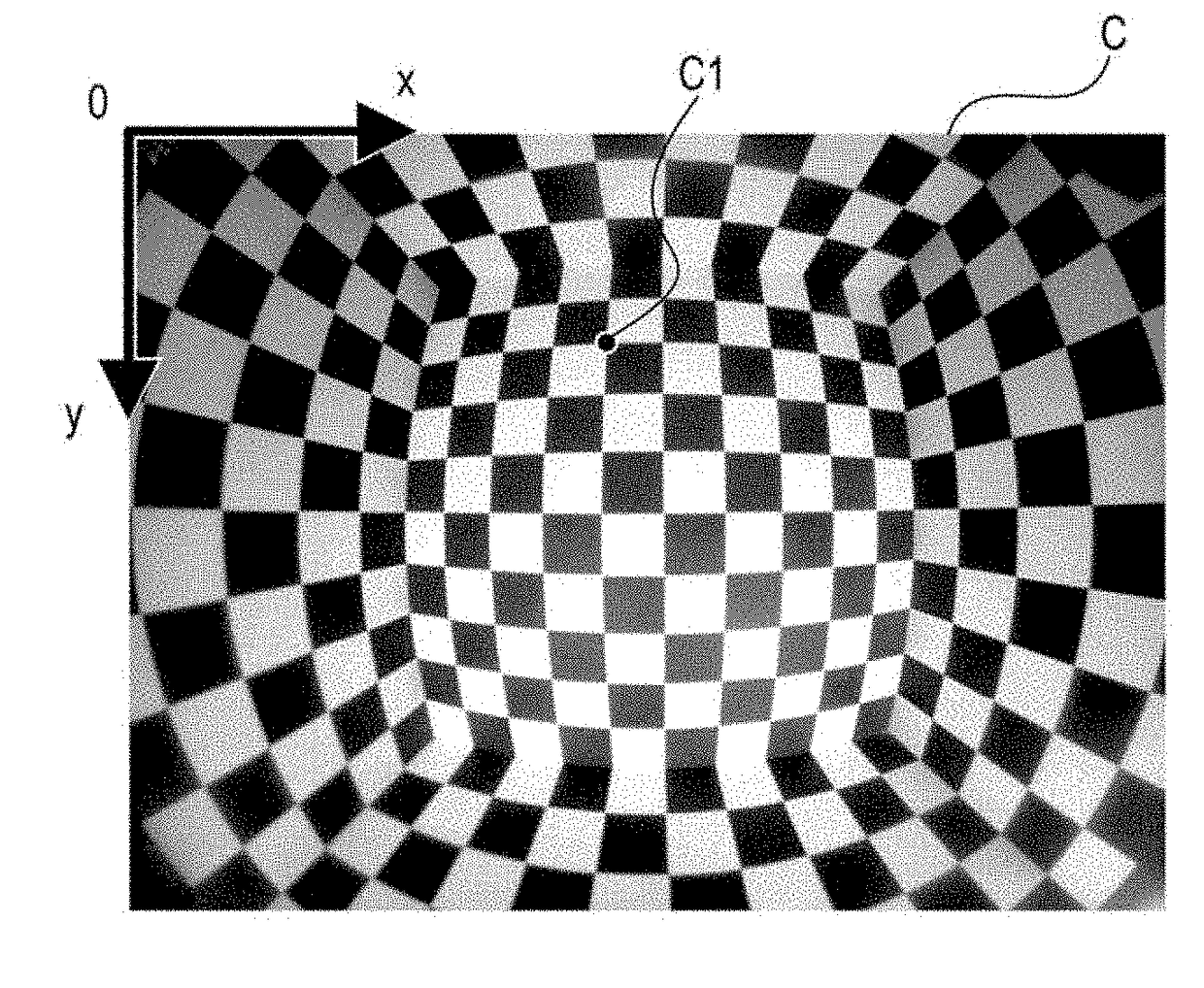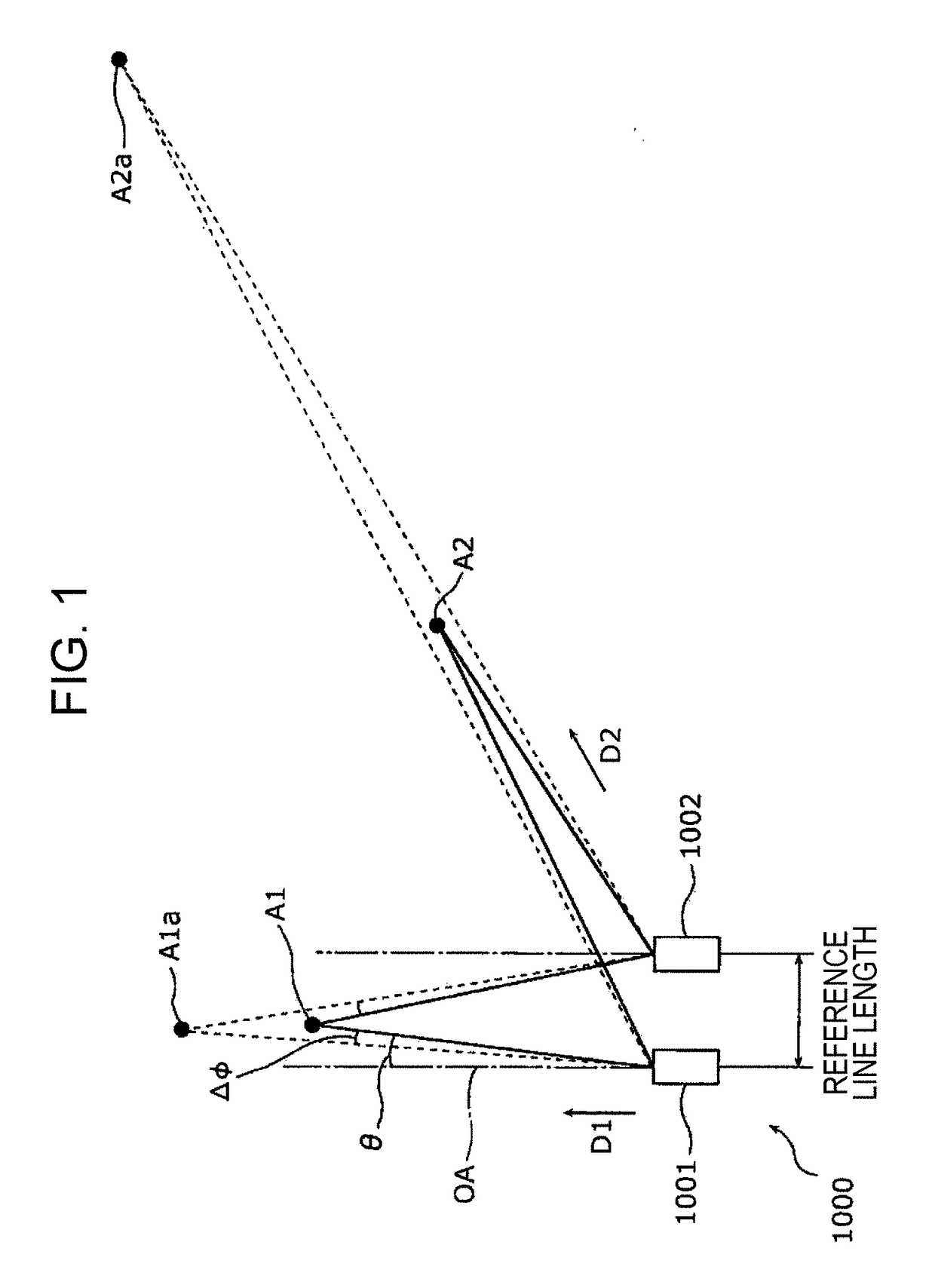Camera calibration method, recording medium, and camera calibration apparatus
a calibration method and camera technology, applied in the field of camera calibration methods, can solve the problems of inaccurate calibration in the entire field of view of the camera, and achieve the effect of accurate calibration
- Summary
- Abstract
- Description
- Claims
- Application Information
AI Technical Summary
Benefits of technology
Problems solved by technology
Method used
Image
Examples
embodiment 1
[1-1-1. Configuration of Camera System]
[0068]Reference to FIG. 3 shows a configuration of a camera system 1 including a camera calibration apparatus 101 according to Embodiment 1. The camera system 1 includes a multiple-lens camera 10 which has two or more lenses and a camera calibration apparatus 101 which calibrates camera parameters of the multiple-lens camera 10. The multiple-lens camera 10 includes multiple lenses 11 and 12 in one housing 15. Note that the multiple-lens camera 10 may include separate multiple cameras each of which includes a lens. Note that although no limitation is intended, the multiple-lens camera 10 in the embodiment is a stereo camera and is capable of stereo distance measurement of the position of a subject. Such a camera system 1 may be mounted on a moving object, for example, a vehicle, a marine vessel, and flying body. The vehicle may be, for example, an automobile, a truck, a bus, a two-wheeler, a transportation vehicle, a railed vehicle, a constructi...
embodiment 2
[0123]A description is provided for a camera calibration apparatus according to Embodiment 2. The configuration of the camera calibration apparatus according to Embodiment 2 is the same as that of Embodiment 1. Some of the operations of the camera calibration apparatus according to Embodiment 2 are different from those of Embodiment 1. To be more specific, while Embodiment 1 uses the weights wk as the view angle-corresponding lengths as indicated in Equation 4 described above when calculating the evaluation value J at step S305 of the camera parameter calculation process S300 illustrated in FIG. 8, Embodiment 2 uses the weights wk as normalized view angle-corresponding lengths. Hereinafter, Embodiment 2 is described mainly on the points different from Embodiment 1.
[0124]Reference to FIG. 11 shows a flowchart illustrating an example of the operation flow of the camera calibration apparatus according to Embodiment 2. The camera calibration apparatus according to Embodiment 2 performs ...
embodiment 3
[0128]A description is provided for a camera calibration apparatus according to Embodiment 3. The configuration of the camera calibration apparatus according to Embodiment 3 is the same as that of Embodiment 1. Some of the operations of the camera calibration apparatus according to Embodiment 3 are different from those of Embodiment 1. To be more specific, while Embodiment 1 uses the weights wk as the view angle-corresponding lengths as indicated in Equation 4 described above when unifying the evaluation value J at step S305 of the camera parameter calculation process S300 illustrated in FIG. 8, the weight wk in Embodiment 3 is the corresponding view angle-corresponding length if the view angle-corresponding length is larger than a threshold and the weight wk is 0 if the corresponding view angle-corresponding length is equal to or less than the threshold. Hereinafter, Embodiment 3 is described mainly on the points different from Embodiment 1.
[0129]Reference to FIG. 12 shows a flowch...
PUM
 Login to View More
Login to View More Abstract
Description
Claims
Application Information
 Login to View More
Login to View More - R&D
- Intellectual Property
- Life Sciences
- Materials
- Tech Scout
- Unparalleled Data Quality
- Higher Quality Content
- 60% Fewer Hallucinations
Browse by: Latest US Patents, China's latest patents, Technical Efficacy Thesaurus, Application Domain, Technology Topic, Popular Technical Reports.
© 2025 PatSnap. All rights reserved.Legal|Privacy policy|Modern Slavery Act Transparency Statement|Sitemap|About US| Contact US: help@patsnap.com



